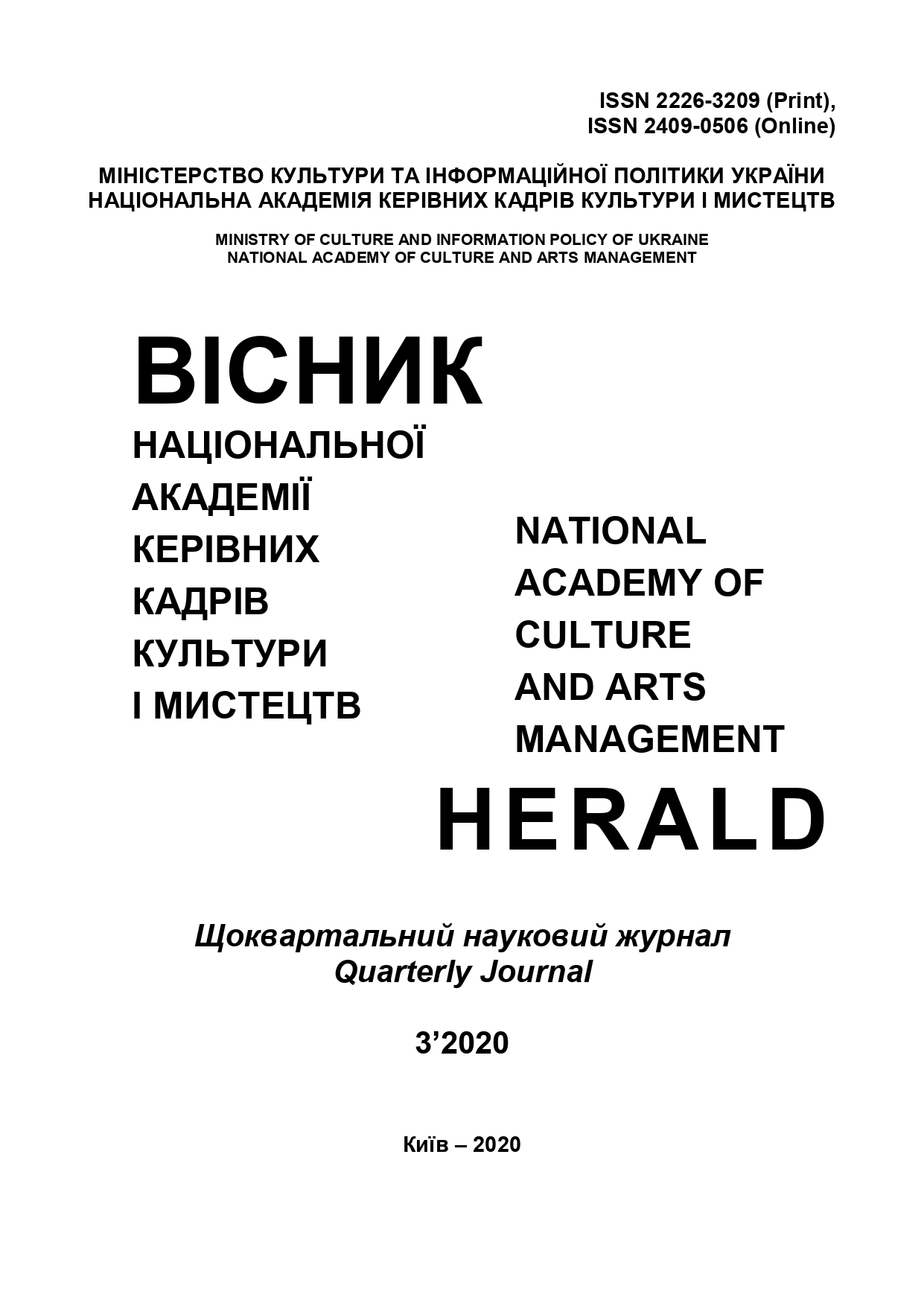Балет «Блазень» С. Прокоф‘єва на київській сцені в оптиці художньої критики
S. Prokofyev's ballet The Jester on the Kyiv stage in the optics of art criticism
Author(s): Alina Mykolayivna PidlypskaSubject(s): Theatre, Dance, Performing Arts, Interwar Period (1920 - 1939), Sociology of Art
Published by: Національна академія керівних кадрів культури і мистецтв
Keywords: ballet The Jester; Sergei Prokofiev; ballet critic; Kiev Opera and Ballet Theater;
Summary/Abstract: The purpose of the research is to reveal the artistic features of the production of S. Prokofiev's ballet The Jester (1928) on the Kiev stage through the prism of the then critical discourse. Methodology. The analysis (for understanding the reviews of the ballet The Jester), comparison (for comparing the positions of the reviewers), the historical approach (for conducting the research in chronological order) are applied. The scientific novelty. The scientific novelty lies in the reproduction of the artistic critical discourse of S. Prokofiev's ballet The Jester (1928) in Ukraine; the introduction of new materials into scientific circulation, which significantly expand the understanding not only of the named ballet, but also of approaches to the artistic evaluation of ballet performances in the late 1920s. in the Ukrainian SSR. Conclusions. The production of S. Prokofiev's ballet The Jester (1928, choreographer M. Diskovsky) on the stage of the Kiev State Academic Opera caused a wide resonance in the artistic periodicals of Ukraine (the magazines Soviet Art, New Art, etc.). Most of the attention is paid to the musical score; a wide range of assessments is presented from extremely negative to unquestioning recognition of the novelty of music. The very exact correspondence of pantomime plastics to the nuances of music was positively assessed. The ballet is accused of formalism, the absence of proper choreographic means of expressiveness, the dominance of pantomime, and lack of focus on the mass audience. At the same time, his progressiveness is noted due to the rejection of academic ballet vocabulary, the search for new means of expression.
Journal: Вісник Національної академії керівних кадрів культури і мистецтв
- Issue Year: 2020
- Issue No: 3
- Page Range: 133-138
- Page Count: 6
- Language: Ukrainian

